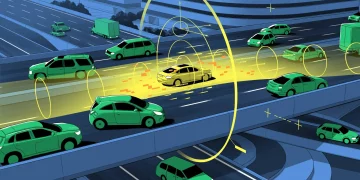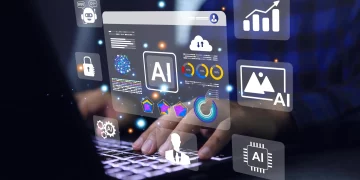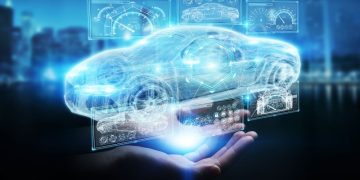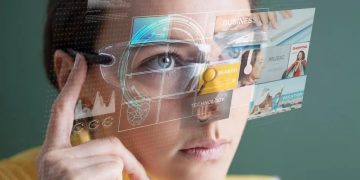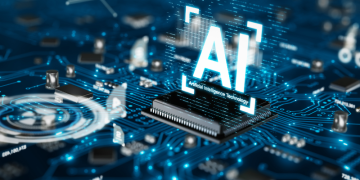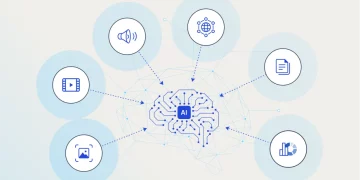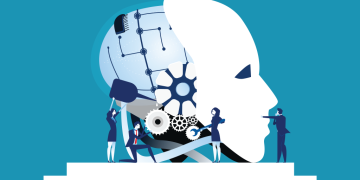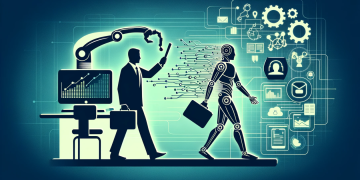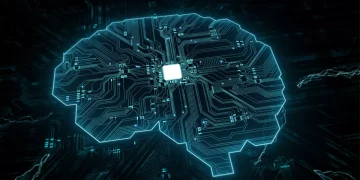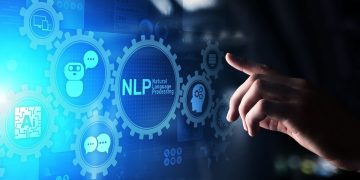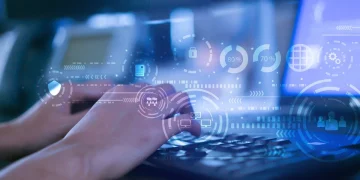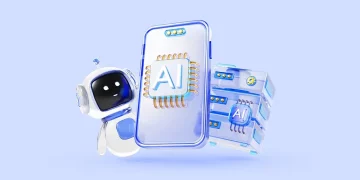Introduction: From Seeing to Understanding
For decades, machines have struggled to match the remarkable capabilities of human vision—our ability to recognize faces, interpret gestures, navigate space, and make sense of subtle visual cues. But in 2025, a powerful convergence of machine vision and deep learning is rewriting that narrative. No longer limited to basic image classification, AI systems are now interpreting, reasoning about, and acting upon visual data with unprecedented sophistication.
This article explores how the integration of advanced deep learning architectures, large-scale multimodal training, and cutting-edge sensor technologies is enabling AI to perceive the world in ways that often exceed human ability—in speed, scale, precision, and dimensionality.
1. The Evolution of Machine Vision: From Pixels to Perception
Machine vision began as an engineering discipline focused on basic image processing—edge detection, color filtering, and object tracking. The advent of convolutional neural networks (CNNs) in the 2010s marked a turning point, enabling computers to recognize patterns in complex visual data.
Since then, vision AI has undergone rapid evolution:
- CNNs enabled breakthroughs in object recognition (e.g., ResNet, VGG).
- Transformers (e.g., Vision Transformer, Swin Transformer) expanded capabilities to spatial attention and global context.
- Multimodal models such as CLIP, Flamingo, and GPT-4o integrate vision with text and audio, enabling semantic understanding of images.
In 2025, machine vision has progressed beyond classification—it now includes scene understanding, 3D reconstruction, visual reasoning, and interaction.
2. Multimodal Perception: Connecting Sight with Language, Sound, and Motion
The future of vision is not in isolation, but in integration with other senses. AI models like GPT-4o, Gemini 1.5, and Claude 3.5 Vision are trained on text, images, audio, and video simultaneously, enabling rich cross-modal understanding.
Key capabilities include:
- Image captioning with context: AI can describe not just what’s visible, but what’s implied.
- Visual question answering (VQA): Users can ask nuanced questions about an image and receive accurate answers.
- Sound-to-vision linking: Models correlate audio (e.g., footsteps, machinery) with visual patterns to understand environments.
- Gesture and facial analysis: Understanding nonverbal cues in conversation, security, and robotics.
These systems create a shared semantic space where visual data is grounded in meaning, intent, and action.
3. Beyond 2D: AI in 3D, Spatial, and Temporal Vision
Human eyes see in stereo, but AI can now perceive far beyond 2D images:
- 3D scene reconstruction from a single or few views using neural radiance fields (NeRFs), point clouds, and voxel grids.
- Depth estimation and spatial mapping power robotics, AR/VR, and autonomous driving.
- Video understanding combines vision and time—enabling AI to detect motion patterns, predict events, and understand temporal causality.
- Volumetric and multispectral imaging (e.g., thermal, LiDAR, radar) extend perception into domains invisible to humans.
By combining these, AI agents are gaining rich spatial awareness, essential for embodied tasks, navigation, and simulation.
4. High-Resolution, High-Speed, and Hyperscale Vision
Machines can now see faster, longer, and at higher resolution than humans ever could:
- Gigapixel cameras combined with AI zoom and enhancement detect objects at massive distances.
- Event-based cameras allow detection of micro-movements (e.g., eye tremors, vibrations) in real time.
- Edge AI for vision enables high-speed object tracking in autonomous drones, vehicles, and industrial robots.
- Real-time neural compression enables large vision models to process video at low bandwidth with minimal latency.
This infrastructure powers use cases from smart surveillance and sports analytics to environmental monitoring and disaster response.
5. Vision-Language-Action Loops: Seeing, Understanding, Acting
In 2025, AI agents are no longer passive observers—they’re active participants in their environment.
The vision stack now feeds directly into decision-making pipelines:
- In robotics, a visual signal (“red cup on the table”) leads to physical action (“grasp it and move it to sink”).
- In autonomous vehicles, visual cues like lane markings or pedestrian movement trigger real-time navigation decisions.
- In surgical assistance, AI systems highlight areas of concern or suggest procedural steps based on visual analysis.
- In creative tasks, AI can generate visual art based on real-world inspiration or textual prompts.
This end-to-end pipeline—from seeing to acting—is a cornerstone of agentic AI.
6. Synthetic Visual Data and AI-Created Perception
One of the most radical advances is AI’s ability to generate entire visual worlds:
- Diffusion models like DALL·E 3 and Stable Diffusion synthesize hyperrealistic scenes from text prompts.
- Synthetic training data—rendered via 3D engines or GANs—allow vision models to train on rare, dangerous, or hypothetical situations.
- Sim2real transfer helps AI learn visual tasks in simulation and apply them in real-world robotics or logistics.
- AI-created vision sensors are being explored to mimic animal perception—like thermal “eyes” or infrared mapping.
These tools give AI unlimited vision experience, unconstrained by human sight or physical limitations.
7. Specialized Applications: Where AI Sees What Humans Can’t
AI vision is unlocking insights in domains where human perception falls short:
- Medical imaging: AI detects tumors, fractures, or anomalies invisible to the untrained eye (e.g., in radiology, pathology, ophthalmology).
- Satellite and aerial imagery: AI detects changes in land use, infrastructure damage, or climate patterns over vast scales.
- Manufacturing inspection: AI pinpoints microscopic defects in chips or surfaces at high speed.
- Agricultural monitoring: Drones and sensors identify early signs of crop disease, pest infestation, or soil stress.
In these contexts, AI is not replacing human vision—it’s enhancing and extending it.

8. Towards General Visual Intelligence
The long-term goal of combining vision and deep learning is to create general visual intelligence—an AI system that can:
- Perceive novel environments.
- Understand visual context across domains.
- Reason about cause and effect in scenes.
- Learn visual tasks with minimal examples.
- Adapt across languages, cultures, and modalities.
Models like GPT-4o, Gemini, and GQA-3D are approaching this level of generalized visual reasoning—capable of explaining, summarizing, and even hypothesizing about what they see.
9. Ethical Considerations and Visual Misinformation
As AI becomes better at seeing—and generating—images, the risks grow:
- Deepfakes and synthetic media challenge authenticity in journalism, politics, and security.
- Bias in facial recognition systems can perpetuate injustice if not carefully designed.
- Surveillance powered by AI vision raises questions about privacy, consent, and control.
- AI hallucination in image interpretation can lead to misdiagnosis or misjudgment if unchecked.
Developers and regulators are working on watermarking, interpretability, dataset transparency, and audit tools to keep visual AI accountable.
Conclusion: Beyond Human Vision
In 2025, AI systems powered by deep learning are no longer trying to merely replicate human vision—they’re transcending it. Through multimodal integration, 3D perception, synthetic generation, and action-oriented design, machines are becoming perceptual agents with unique and powerful ways of seeing the world.
This transformation is reshaping how we diagnose illness, build cities, grow food, explore space, and create art. And as AI learns not only to see—but to understand and act—machine vision will become an extension of human intelligence, enabling us to perceive complexity we never could on our own.
The future of vision is not just in sight—it’s in understanding.



